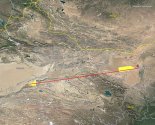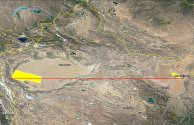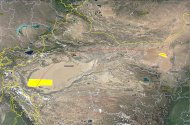Air Launched Ballistic Missile (ALBM) with what appears to be a manoeuverable warhead section which we can classify as a MaRV weapon if it goes outside the atmosphere or it could be one of the basic types of dual conical gliders which qualify as a form of HGV so it doesn't exactly need to go exoatmsophere and rely on a "depressed" trajectory after being launched from the aircraft.
Likely candidates for launch platform include H-6 and there was some rumours flying around that it could be launched by some new bomber platform, H-20 etc. Seems like a stretch given the size but those are the rumours.
What it is aimed at is unknown. Likely candidates include ships or static land targets. Range of just the missile appears MRBM ranged so tops out around 2000km-3000km. With air launch from higher altitude and with some speed, range could be up to 3000km - 4000km? as a finger in the air sort of estimate. Could be off by 2000km in either direction.
Right could be a weapon that brings platforms like H-6 back into relevance for deterence.
However, you are not going to get 1000km + of additional range out of air launch. We are not talking about SR-71 launching something close to Mach 3 at 80000+ alt. This is a subsonic bomber flying at modest altitude around or slightly above airliners.





